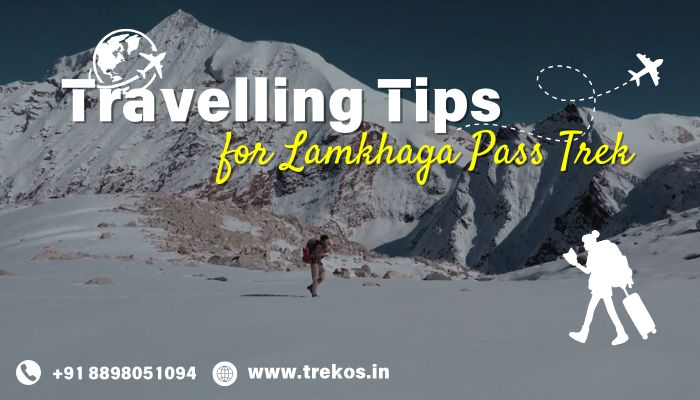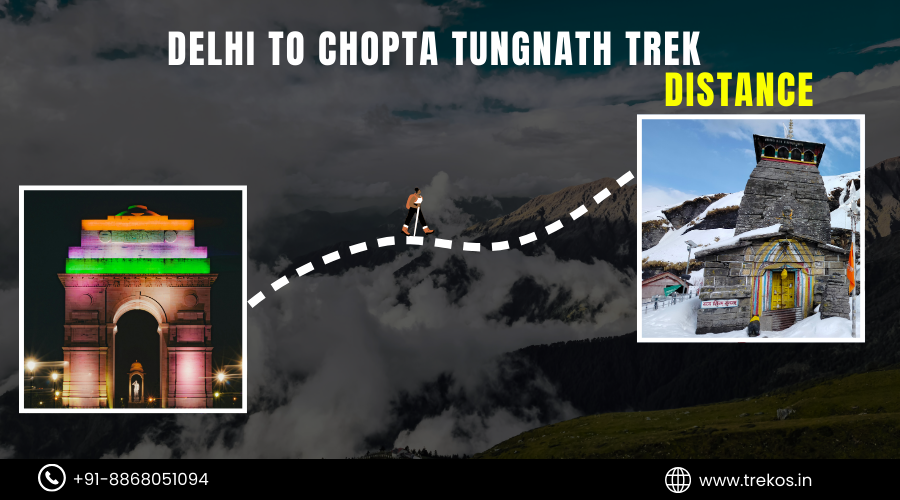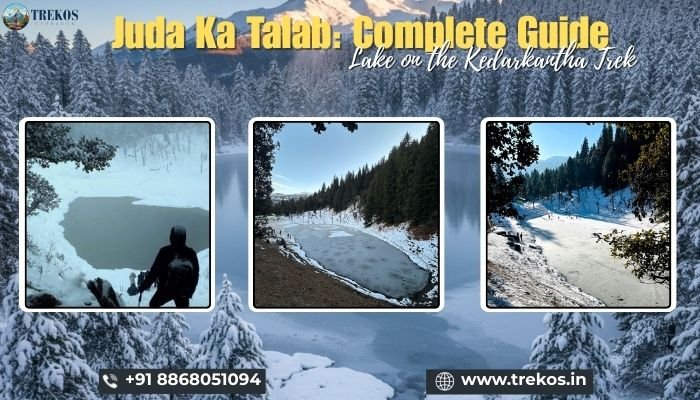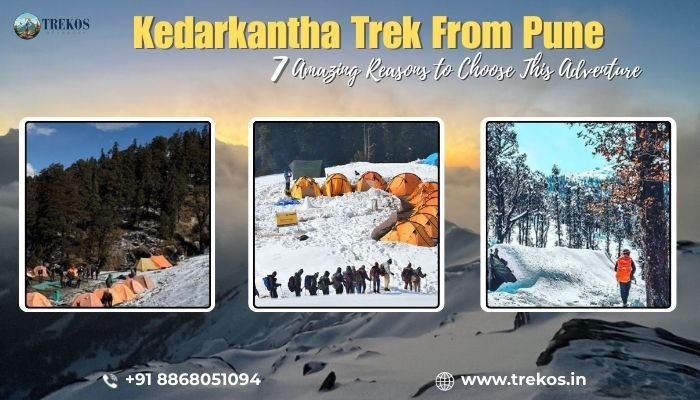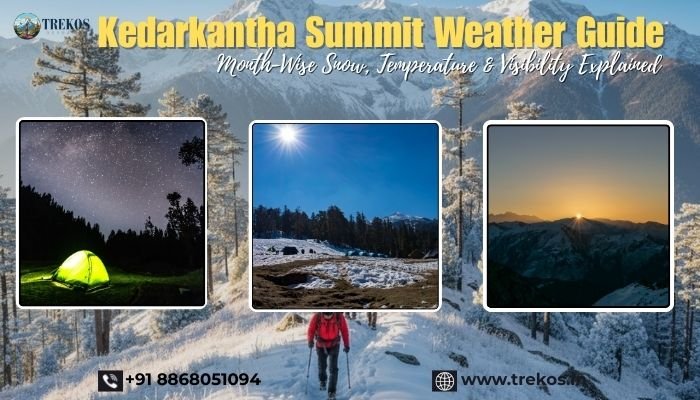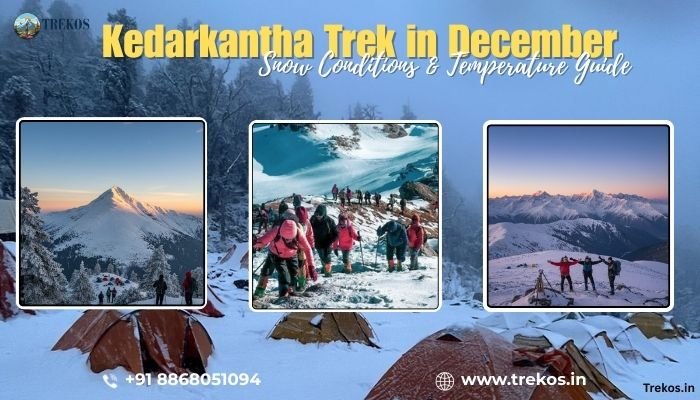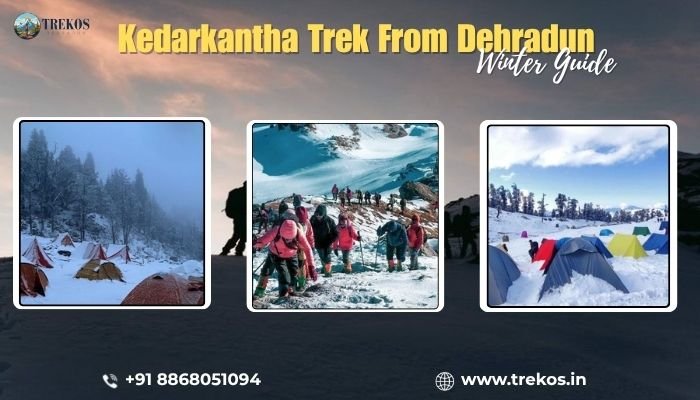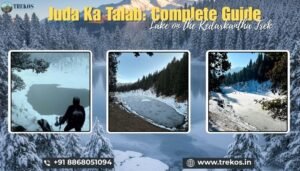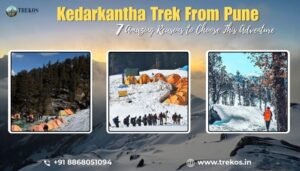Travelling Tips for Lamkhaga Pass Trek: A Complete Guide
The Travelling Tips for Lamkhaga Pass Trek is a thrilling 90 km journey through Uttarakhand’s picturesque landscapes, offering breathtaking views of the Himalayas. This challenging trek requires careful preparation and physical endurance.
Physical Fitness: A good level of cardiovascular health and endurance is essential for this trek. Trekkers should be able to cover 10-12 km per day, with steep ascents and descents.
Experience: Previous high-altitude trekking experience (above 5300 meters) is highly recommended. Familiarity with rugged terrain, snow, and ice will enhance your safety and enjoyment.
Permits: Obtain necessary permits from Uttarakhand Tourism (UTDB) and the District Magistrate’s office in Uttarkashi. Permits cost approximately ₹500-₹1,000 per person.
Weather: The best time to trek is May-June or September-October, with clear skies and moderate temperatures (-2°C to 15°C). Be prepared for unpredictable weather conditions, including snow, rain, and heat.
Insurance: Consider purchasing trekking insurance that covers emergency medical evacuation, hospitalization, and trip cancellations. Policies start from ₹500-₹2,000 per person.
| Travel Details |
Information |
| Nearest Airport | Jolly Grant Airport, Dehradun |
| Nearest Railway Station | Dehradun Railway Station |
| Starting Point of Trek | Harsil Valley |
| Mode of Transport to Harsil | Road (Private Taxi, Bus) |
| Best Time to Travel | May-June or September-October |
| Trek Duration | 7-10 Days |
| Total Distance to Cover (from Dehradun) | 215 km |
| Trekking Group Size | 6 to 10 Trekkers |
| Accommodation in Harsil | Hotel, Home stay |
Packing Essentials for Lamkhaga Pass Trek
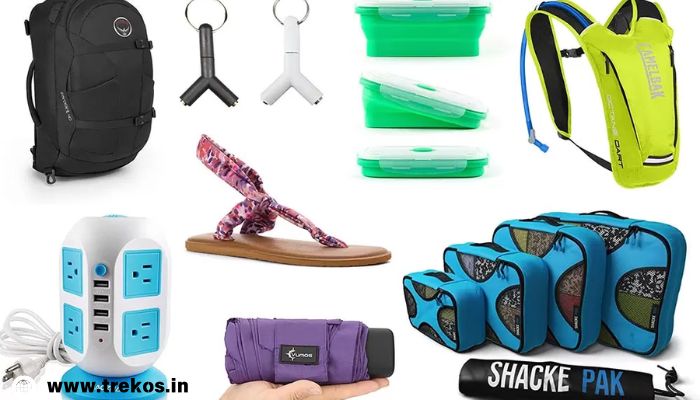
To ensure a safe and enjoyable Lamkhaga Pass Trek, it’s crucial to pack the right gear. Start with layered clothing, including a base layer (thermal top and leggings), mid-layer (fleece jacket and pants), and outer layer (waterproof and windproof jacket and pants). Add warm accessories like gloves, hats, scarves, and socks. Sturdy, waterproof hiking boots with good grip and ankle support are vital, along with extra socks, gaiters, and crampons for snow and ice.
Clothing: Bring warm, layered clothing, including a base layer (thermal top and leggings), mid-layer (fleece jacket and pants), and outer layer (waterproof and windproof jacket and pants). Add warm accessories: gloves, hats, scarves, and socks.
Footwear: Sturdy, waterproof hiking boots with good grip and ankle support are crucial. Bring extra socks and consider gaiters and crampons for snow and ice.
Trekking Gear: Pack a backpack (40-60 liters), trekking poles, ice axe, harness, and rope. Don’t forget a water bottle or hydration bladder, water purification tablets or filter, and a first aid kit.
Shelter and Sleeping: Bring a waterproof tent, sleeping bag (-20°C rated), sleeping pad, and ground tarp. A portable stove and fuel will help with cooking.
Personal Items: Include toiletries (biodegradable soap, toilet paper, hand sanitizer), headlamp or flashlight, extra batteries, sunglasses, sunscreen, and insect repellent. Carry essential documents (ID, permit, insurance) and a camera to capture breathtaking views.
Food and Hydration: Pack energy-rich snacks (nuts, dried fruits, chocolate), non-perishable food items (canned goods, energy bars), and a water bottle or hydration bladder. Consider a portable water filter or purification tablets.
Emergency Kit: Assemble a kit with a whistle, emergency shelter, bivvy sack, fire starter (matches, lighter), and a personal locator beacon (PLB) or satellite phone.
Miscellaneous: Bring a map, compass, GPS device, and guidebook. Don’t forget trash bags, a repair kit (duct tape, safety pins), and a portable charger for your devices.
Weight Management: Keep your backpack weight under 15 kg to maintain comfort and mobility.
Trekking Tips for Lamkhaga Pass Trek
Embarking on the Lamkhaga Pass Trek requires careful preparation and attention to detail. To ensure a safe and enjoyable journey, consider the following Travelling tips:
Pre-Trek Preparations: Before embarking, assess your physical fitness and acquire necessary permits. Obtain weather forecasts and ensure you have adequate insurance coverage. Familiarize yourself with high-altitude trekking, crevasse rescue techniques, and emergency first aid.
Trekking Strategies: Begin each day early to avoid unpredictable weather conditions. Maintain a steady pace, taking regular breaks to rest and rehydrate. Monitor your body’s response to high altitude, descending if symptoms persist. Stay alert for potential hazards, such as steep drop-offs, crevasses, and inclement weather.
Safety Considerations: Hire experienced guides and porters knowledgeable about the terrain and potential risks. Carry essential safety gear, including crampons, ice axes, harnesses, and emergency shelters. Stay informed about weather conditions and potential avalanche risks.
Health and Hygiene: Stay hydrated by drinking plenty of water and avoiding dehydration. Monitor your health, recognizing signs of altitude sickness, hypothermia, and other potential ailments. Maintain personal hygiene, using biodegradable soap and toilet paper.
Environmental Awareness: Respect the fragile Himalayan ecosystem, disposing of waste properly and minimizing campfire impact. Avoid disturbing wildlife and their habitats.
Mental Preparation: Developmental resilience through focus, determination, and positive thinking. Build strong relationships with fellow trekkers and support staff.
Health and Safety for Lamkhaga Pass Trek
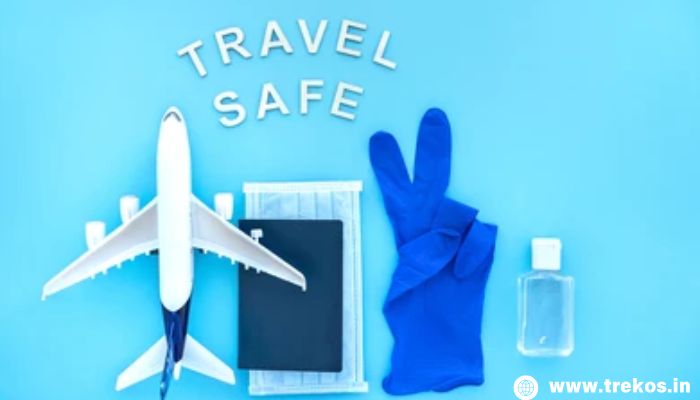
The Lamkhaga Pass Trek poses potential health and safety risks due to its high altitude, rugged terrain, and unpredictable weather. To minimize risks, consider the following precautions:
Altitude Sickness: Recognize symptoms, headaches, nausea, fatigue, and shortness of breath. Descend immediately if symptoms persist. Acclimatize by ascending gradually, taking rest days, and drinking plenty of water.
Physical Injuries: Prevent slips, trips, and falls by wearing sturdy boots and using trekking poles. Treat injuries promptly, seeking medical attention if necessary.
Weather-Related Risks: Monitor forecasts, avoiding treks during severe weather conditions. Be prepared for sudden changes in temperature, humidity, and wind.
Health Precautions: Stay hydrated, drinking at least 3-4 liters of water per day. Avoid dehydration, heat exhaustion, and heatstroke. Bring essential medications and a first aid kit.
Crevasses and Steep Terrain: Use crampons, ice axes, and harnesses when traversing icy or steep sections. Ropes and carabiners may be necessary for particularly hazardous areas.
Avalanche Risks: Assess snow conditions, avoiding areas with high avalanche risk. Carry avalanche safety gear, including transceivers, probes, and shovels.
Emergency Response: Establish an emergency response plan, including evacuation procedures and contact information for local authorities.
Pre-Trek Medical Checkup: Consult a doctor before embarking, especially if you have pre-existing medical conditions.
Guided Tours: Consider hiring experienced guides and porters familiar with the terrain, risks, and emergency procedures.
Local Etiquette for Lamkhaga Pass Trek
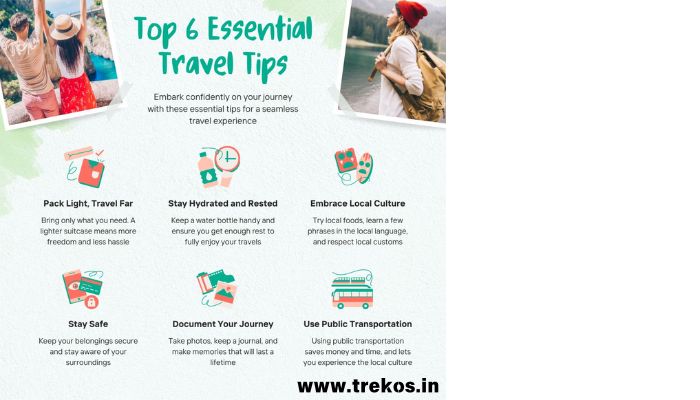
When trekking through the picturesque villages and landscapes of Uttarakhand, respecting local etiquette is essential for Travelling Tips for Lamkhaga Pass Trek:
Respect Local Customs: Familiarize yourself with local traditions, rituals, and beliefs. Remove shoes when entering temples, homes, or cultural sites.
Dress Modestly: Wear conservative clothing, covering shoulders and knees. Avoid revealing or provocative attire.
Interact with Locals: Greet villagers with a namaste or hello, showing respect and kindness. Learn basic Hindi phrases to communicate.
Environmental Responsibility: Dispose of waste properly, using designated bins. Avoid littering, and conserve water.
Cultural Sensitivity: Refrain from taking pictures inside temples or during cultural ceremonies without permission.
Support Local Economy: Engage local guides, porters, and services, contributing to the community’s economic well-being.
Respect Wildlife: Maintain a safe distance from animals, avoiding disturbance or feeding.
Campsite Etiquette: Follow designated campsites, keeping noise levels down, and respecting fellow trekkers.
Conclusion
When undertaking Travelling tips for Lamkhaga Pass Trek we should prioritize physical fitness and high-altitude experience. Obtain necessary permits and insurance coverage and pack essential gear, including warm clothing and emergency supplies. Acclimatize to high altitude, monitoring health and hydration, and respect local customs, environment, and wildlife. Additionally, plan carefully, researching weather, terrain, and local conditions. Stay flexible, adapting to changing circumstances, and prioritize health, safety, and well-being. Hire experienced guides and porters for safety and support and stay informed about weather conditions and potential risks while making travelling tips for Lamkhaga Pass Trek.
FAQs for Travelling Tips for Lamkhaga Pass Trek
1 How can I avoid altitude sickness during travelling tips for Lamkhaga Pass Trek?
Ans Travelling tips for Lamkhaga Pass trek to avoid altitude sickness include gradual ascension, hydration, and rest. Monitor oxygen levels and descend if symptoms persist.
2 What are the best travelling tips for Lamkhaga Pass Trek’s challenging terrain?
Ans Use GPS devices, follow experienced guides, and watch for trail markers. Travelling tips also recommend carrying emergency shelters and warmth.
3 What type of clothing should I pack for the trek?
Ans Pack layered clothing for cold weather, including thermal wear, waterproof jackets, gloves, and sturdy trekking shoes. A rain jacket and sun protection (sunscreen, sunglasses) are also essential.
4 What are the essential travelling tips for Lamkhaga Pass Trek beginners?
Ans Travelling Tips For Lamkhaga Pass Trek, beginners should pack lightly, bring waterproof gear, and acclimatize to high altitudes. Start training at least 3 months prior to build endurance.
5 What are the must-carry items for travelling tips for Lamkhaga Pass Trek & How can I stay hydrated during Travelling tips for Lamkhaga Pass Trek?
Ans Travelling tips for Lamkhaga Pass Trek include carrying trekking poles, waterproof jackets, insulated sleeping bags, first aid kits, and communication devices. Travelling tips for Lamkhaga Pass Trek for staying hydrated include drinking at least 3 liters of water per day, avoiding caffeine, and using water purification tablets.
6 How can I manage emergencies during Lamkhaga Pass Trek and Can I travel solo for Lamkhaga Pass Trek?
Ans Carry emergency contact information, first aid kits, and communication devices. Travelling tips for Lamkhaga Pass Trek recommend informing authorities of your itinerary. Travelling tips for Lamkhaga Pass Trek advise against solo travel due to remote terrain and potential emergencies. Join a guided group or find experienced trekking partners.

